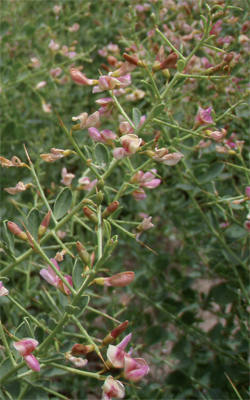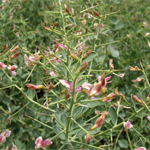Camel thorn

Camel thorn (Alhagi maurorum Medik.) is a State prohibited weed.
If you find camel thorn
If you think you have seen camel thorn, please contact us by:
- completing this form
- calling our Customer Service Centre on 136 186
- emailing weed.spotters@agriculture.vic.gov.au
Please do not attempt to treat or dispose of this weed yourself. We will treat, remove and dispose of camel thorn safely, at no cost to the land owner.
Why you must report camel thorn
Camel thorn is usually found along drainage lines and in irrigated pasture. Its vigorous root system can penetrate over 2m deep, making it strongly competitive with other plants. Lateral roots can grow up to 8m each year from the parent plant.
Camel thorn has been known to break through sealed bitumen roads, while sharp-tipped spines can be a danger to stock. A major source of spread is from the movement of root fragments due to cultivation.
Camel thorn in Australia
The native range of camel thorn spans across eastern Europe, the Middle East and Central Asia.
How camel thorn was introduced to Australia is unclear, though it was recorded at Rutherglen in 1915. Isolated infestations are also found in New South Wales, South Australia and Western Australia.
Identifying camel thorn
Camel thorn is found in the northern parts of Victoria, usually associated with irrigated pastures and neglected areas.
It is a rigid, much-branched, spiny shrub. It's commonly 25cm to 60cm tall but can grow to 1.5m tall.
Aerial growth dies in autumn and new shoots emerge from roots in spring.
 Leaves are:
Leaves are:
- blue-green
- arrow-head to oval shaped
- 0.5cm to 3cm long
- 0.2cm to 1.4cm wide
- often singular
- more common on lower branches.
 Flowers are:
Flowers are:
- pea-like
- 7mm to 10mm long
- brown to red and purple
- in clusters of 1 to 8 in spring to summer.
Stems bear numerous yellow-tipped spines that are:
- 1cm to 4cm long.
Pods are up to 2.5 cm long and have 1 to 5 seeds.